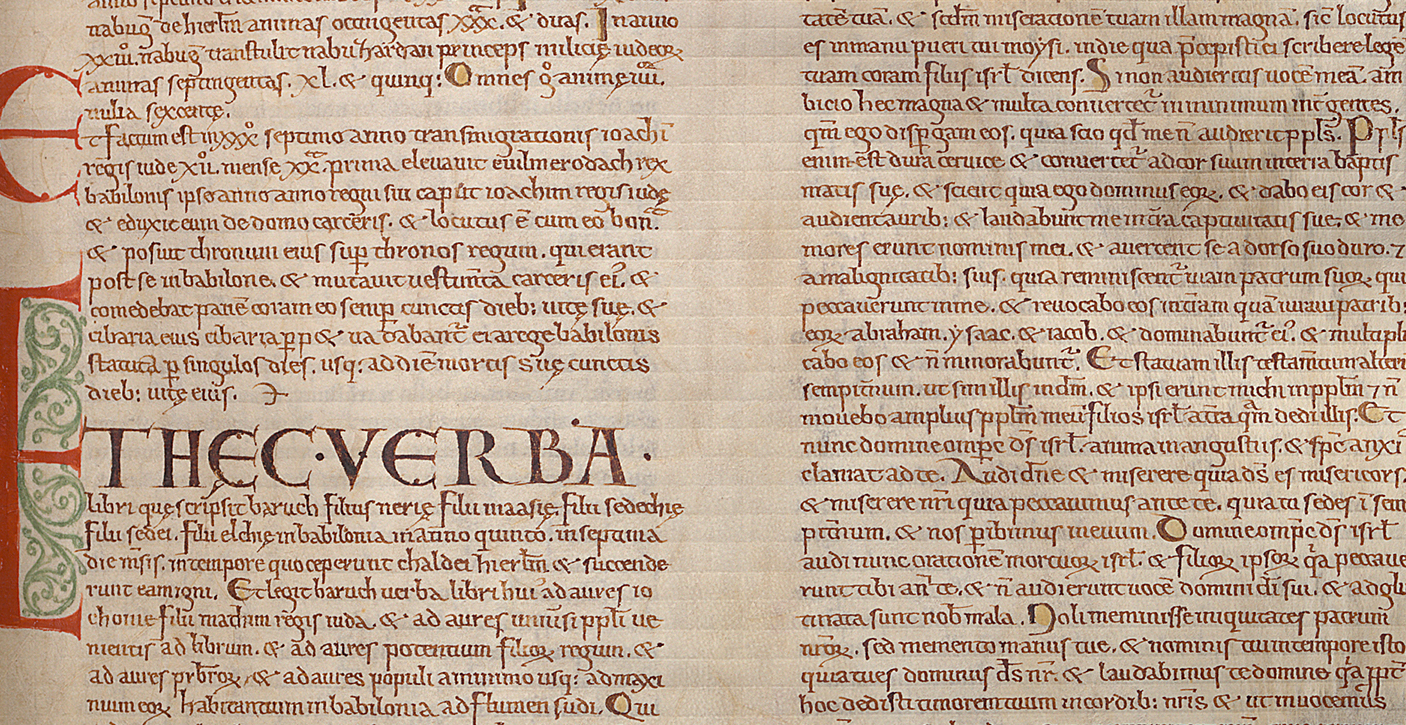Script
The Codex Gigas was written entirely by a single scribe in a script called Carolingian minuscule.

Carolingian minuscule is very similar to the scripts we use today.
Small letters on many lines
The texts were composed on ruled guide lines using a two-column layout with 106 lines on each page. The height of the letters is between 2.5 and 3 mm, which is very small for such a large book. But by using small writing and having many lines per page, the scribe was able to fit all the texts into a manageable number of pages.
An outmoded script
The Codex Gigas was written almost exclusively in Carolingian minuscule, a medieval script that is very similar to the letters used today. It was developed in the 9th century and was in extensive use until the end of the 12th century. In other words, this script was outmoded when the Codex Gigas was written.
How many years' work?
It is very difficult to know how long it took to write the Codex Gigas. The scribe may have written a column with 106 lines in a day. If he worked for six hours a day and wrote six days a week, the manuscript may have been completed in about five years.
If the scribe was a monk, he may only have been able to work three hours a day, which means that it may have taken him ten years.
Because the scribe may also have ruled the pages with guide lines, a job that probably took many hours per leaf, this means that it probably took at least 20 years to complete the manuscript, and maybe even 30 – or a whole lifetime!
